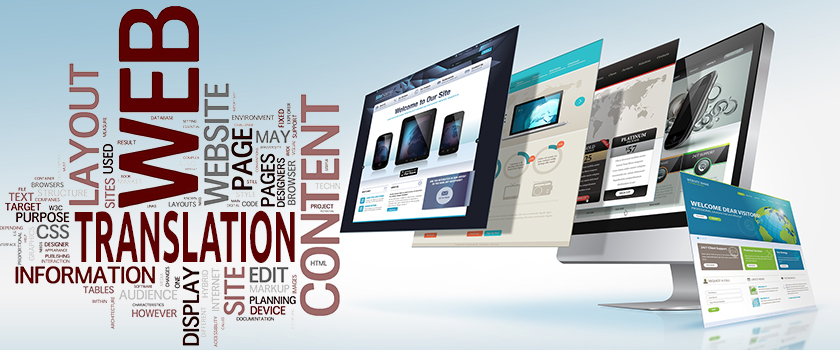2025 Offer Request a Quote Today and Grab a $50 Coupon for Free!
Globalization and digital advancement in current times have opened many doors of opportunity for companies worldwide. With internet penetration paving the way for website marketing, it is common to expect that every business will want its own website to reach its customers. This raises the need for accurate and professional website translation services.
Website translation has become more challenging and complex than in the past. As globalization increases competition among companies, the need to get accurate website translations manifests, even more, these days. However, website translation is not as easy as it seems; it comes with its own challenges and hurdles.
If you own a business and have your eyes on the global market for expansion, website translation is just the solution for you. Before we explore the challenges that must be overcome if you want your website to stand out from the rest, let us look at the purpose of getting website translation in the first place.
Although this may seem like an absurd question to ask, have you ever considered the purpose of a website? While it is true that a website allows you to have a presence on the web for informing the audience about your products and services, the purpose of a website is more than just that. A company opts to create a website for its customers as a means to provide a solution to their specific needs. This can be done by communicating the solutions to the audience in a clear, precise, and persuasive manner through a website.
If you own a domestic website, you may not need website translation, as your audience speaks the language your website displays. However, if you plan to step outside your native market, you need to expand your website as well to cater to the demands of the global customer. Here, you may need the services of a professional website translation service, which can make the translation job easier for you.
The starting point of a website translation is usually choosing the right translation method and the support of a certified website translation service as a means to find the right balance between accuracy, precision, speed, and clarity. When opting for website translation, there are two methods you can opt for machine translation and human translation.
Human translation:
Human translation involves hiring professional website translators to translate all your web pages on a page-by-page basis. Professional and expert translators can be relied upon to provide you with accurate and professional translations of websites that are not only accurate, but also clear, precise, and attractive for the target audience.
Before choosing this method of website translation, you first need to consider the technical aspects behind a multilingual site, as professional translators may not be able to integrate these technical elements into your website. Secondly, you may need to consider the costs—professional translators are expensive to hire if your translations are lengthy, and it may burn a hole in your pocket to hire translators for your websites, particularly if there is a lot of website content to translate.
Machine Translation:
Machine translation is another option that you can opt for if you need accurate translation of your web content. Although some linguists raise the question of accuracy when it comes to machine translation, the quality of this translation method has improved considerably over the years. The upsides of using a machine translation method are that it offers a speedy and cost-effective translation option while kick-starting your website translation process. This allows you to refine your translations to meet the quality requirements that you intend for your websites.
Another challenge that presents itself in the process of website translation is design considerations. When translating your websites for the purposes of localization for another market, it is important to keep design considerations in perspective.
Irrespective of the Content Management System (CMS) that you may be using, the first thing you should consider is the theme of your website. Ensure that the theme that you have chosen is compatible with other apps and plugins on your website and also enhances your site’s functionality. In addition, make sure that it uses proper formatting for languages and is well-structured to fit the target language's needs.
When incorporating the translated content into your website’s design, be considerate of the appearance of your website. The reason for this is that languages not only differ in syntax but also take up different spaces in a given sentence. A failure to consider the spaces may result in overlapping text and broken strings, which would not attract new customers.
Another challenge that companies face in the process of website translation is finding technologies that support website localization as well as multilingual websites. This is important to ensure the content can be translated efficiently without any complications. If your business owns a WordPress website, then WPML is a good plugin to get the content translated efficiently. All you need to do is select the pages to be translated and directly upload them to your professional website translators, who will translate the content for you. More importantly, you need to make sure the translated language is compatible with your website and offers an enticing view for website visitors. For example, you can opt to consider compatibility issues with your E-commerce site by availing of E-commerce website translation services.
When translating websites for the global market, it is important to keep in mind that website translation is a part of the whole localization process and should be done with respect to a particular geographic region. This means that even if two countries speak the same language, they may have distinct differences that would require a tailored approach to localization.
While translating text for a target market, bear in mind that cultural context plays a vital role in the website localization and tailoring process. For example, although English is the first language in both the UK and the USA, these countries still vary with respect to their cultural preferences. So, if you own a travel agency in the UK targeting American customers, you may need to localize certain aspects of your site by using American-English spelling of words, such as “vacation” in place of “holiday”.
Additionally, be sure to consider any images or media on your website. This is because imagery also needs to be translated for the target audience, in the same way as the text. This may include screenshots that include text to better explain the software or service. Other than this, holidays and certain days also need to be kept in mind. For example, in Middle Eastern countries, Christmas and Easter are not celebrated, which is why it is advisable to adopt any holiday-specific content to be relevant to the region you are targeting.
After a website is localized, there is a need to test and review the final website before it is released to the public. Keep in mind that first impressions last longer, which implies that if there are any mistakes, you could lose the interest of potential customers. This is the reason why it is always a good idea to check with your translation partner before performing UI/GUI testing as well as QA on translated websites.
In this testing, every word should make sense in context, and all functional aspects of the site should work properly. Take, for example, text expansion, as some languages require more words. Make sure the translated content works properly in the graphical user interface. Answer these questions when testing:
One other aspect often ignored by companies is the consideration of international SEO. Once your website is ready for customers around the globe, you need to make sure they can find it when browsing online. Here, you may need a strong and foolproof multilingual SEO strategy.
Multilingual SEO is basically doing everything you do for your domestic website but for every language version of your site. Successful multilingual SEO involves translating your website’s entire content, as well as any metadata on your site, adding tags, and creating language-specific subdomains/directories. By following these aspects, you can better optimize your website for global search engines and international visibility. Moreover, considering multilingual SEO will make your website discoverable to visitors all over the world who are searching for it in a foreign language.
Website translation is a critical element of the website localization process. A company that wants to step outside its current market will need to adapt its website to suit the needs and preferences of the target market. Successful website translation involves the adaptation of all website elements while keeping the cultural and language preferences of the target market in perspective. This will mean higher visibility for your website on the global search engines as well as a greater number of visitors to your website.

Mars Translation provides high quality and professional Certified French Translation Services all over the world. We have a team of
Read more
Mars Translation provides one of a kind professional Chinese Document translation services all over the world. All of MT’s translators
Read more
MarsTranslation provides one of a kind Chinese Legal Translation Services. We have a team of native Chinese linguist who specialize
Read more
Chinese Certified Translation services is one of the most asked for service at MarsTranslation. We believe in providing quality services
Read more
Mars Translation is one of the fastest growing companies in the translation industry. This is the reason why we pay
Read more
MarsTranslation has a huge team of website translation specialists in more than 230 languages. Our translators are constantly supported by
Read more
Mars Translation provides high quality and professional Certified Spanish Translation Services all over the world. We have a team of
Read more
Mars Translation has hired some of the best and most experienced Danish translators to work on your translation projects. We
Read more
Medical terminologies are tough to understand and not easy to comprehend by everyone. Although these terminologies are difficult to understand
Read more

